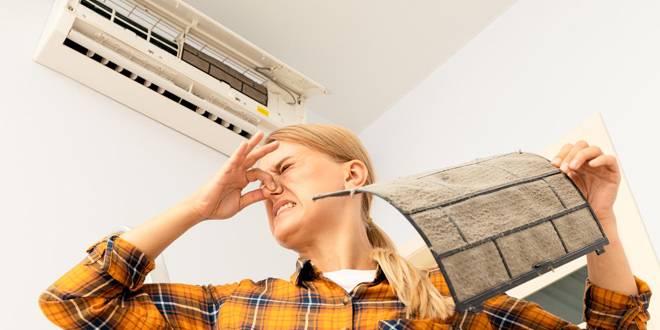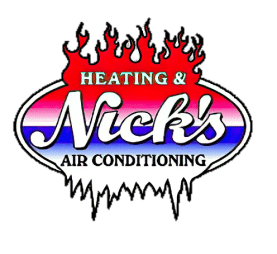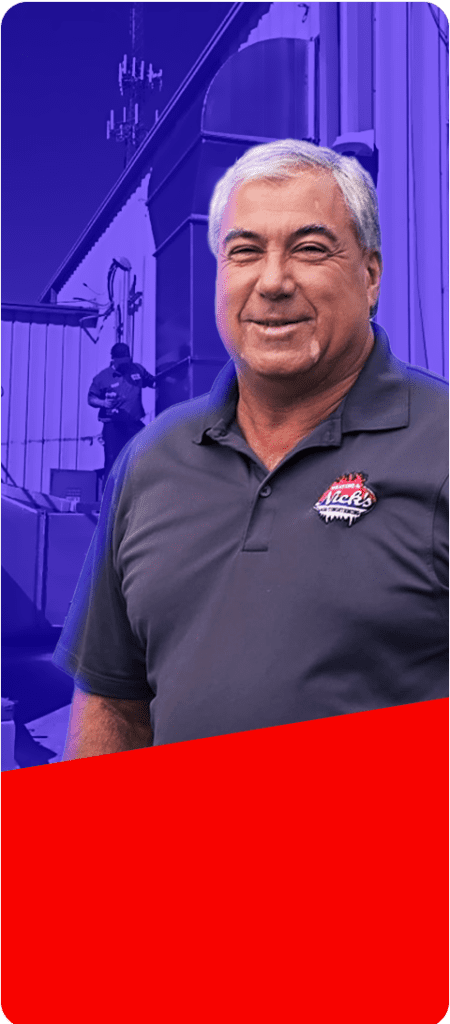
In Hammond, LA, and surrounding areas, your HVAC system is crucial for comfort throughout the year. While some issues require professional attention, there are several common problems you can safely address on your own. Here’s a guide to help you identify and solve these issues:
1. Replacing Dirty Filters
The efficiency of your HVAC system is heavily reliant on the cleanliness of its air filters. Over time, filters can become clogged with dust, pet dander, and other airborne particles, leading to restricted airflow and increased strain on the system. This not only compromises the system’s efficiency but can also lead to higher energy bills and reduced air quality in your home.
DIY Solution: To ensure your system operates at peak performance, it’s important to replace the filters regularly. The frequency of replacement depends on several factors, including the type of filter, the usage of your HVAC system, and whether you have pets. As a general guideline, filters should be changed every 1-3 months. This routine maintenance task is simple yet impactful, enhancing both the air quality in your home and the longevity of your HVAC system.
2. Thermostat Issues
The thermostat acts as the control center for your HVAC system, dictating how it heats or cools your space. Incorrect settings on the thermostat can result in rooms being too hot or too cold, which not only affects comfort but can also cause your HVAC system to work harder than necessary.
DIY Solution: To avoid these issues, it’s advisable to periodically check your thermostat. Ensure it is set to the appropriate mode for the season – heating in cooler months and cooling in warmer ones. Also, check the batteries, as low power can lead to erratic HVAC performance. Reviewing and adjusting the programmed settings can also be beneficial, especially if your schedule has changed. These simple checks and adjustments can often rectify common thermostat-related issues without the need for professional intervention.
3. Tripped Circuit Breaker
When your HVAC system suddenly stops working, the issue may be electrical rather than mechanical. A common electrical issue is a tripped circuit breaker, which can occur when the system overloads the electrical circuit.
DIY Solution: To address this, locate your home’s electrical panel and look for any breakers that have moved to the “off” position. Carefully reset these breakers to restore power. However, if the breaker trips again soon after resetting, this is a sign of a more serious electrical issue that requires the expertise of a professional. Continual tripping can indicate overloaded circuits, short circuits, or other electrical faults that could pose safety risks.
4. Unclean Vents and Registers
The vents and registers in your HVAC system play a crucial role in distributing air throughout your home. However, they can accumulate dust and debris over time, which can obstruct the airflow and reduce the system’s efficiency. This not only leads to uneven heating or cooling but can also force your HVAC system to work harder, potentially shortening its lifespan.
DIY Solution: To prevent these issues, it’s important to clean and vacuum your vents and registers regularly. This can be done using a vacuum cleaner with a hose attachment to remove dust and debris. For more thorough cleaning, you can remove the vent covers and clean them with soap and water. This routine maintenance helps ensure consistent airflow and maintains the health of your HVAC system.
5. Unusual Noises
Your HVAC system should operate relatively quietly. When it starts making noises like rattling, buzzing, or whistling, it’s often an indication that something is amiss. These sounds can range from being a minor annoyance, suggesting loose components, to signaling major issues that could lead to system failure.
DIY Solution: Start by inspecting your system. Rattling often points to loose screws or panels that can be easily tightened with basic tools. Buzzing noises might indicate electrical issues and whistling sounds could be due to airflow restrictions. Address what you can safely manage, such as tightening loose parts. However, if the noises are loud and persistent, or you’re unsure of the cause, it’s wise to seek professional help. A trained technician can accurately diagnose and repair the issue, ensuring your system’s longevity and your safety.
6. Drainage Issues
The condensate drain plays a crucial role in your HVAC system by removing condensation produced during the heating and cooling process. When this drain becomes clogged, it can lead to water leaks and elevated indoor humidity levels, which can be both uncomfortable and potentially damaging to your home.
DIY Solution: To prevent these problems, regularly inspect and clean your condensate drain line. Look for any visible blockages and clear them out. Additionally, cleaning the drain pan can help prevent the growth of algae and mold, which are common culprits for clogs. This maintenance task is not only simple but also crucial in preventing water damage and maintaining optimal humidity levels in your home.
7. Outdoor Unit Obstructions
The outdoor component of your HVAC system needs adequate space to function efficiently. Leaves, dirt, and other debris can accumulate around this unit, obstructing airflow and reducing its efficiency. This can lead to your system working harder than necessary, increasing wear and tear and potentially leading to higher energy bills.
DIY Solution: To ensure your system runs smoothly, maintain at least a 2-foot clearance around the outdoor unit. Regularly check the area and remove any debris, leaves, or dirt that might have gathered. This not only helps in maintaining the efficiency of your unit but also extends your HVAC system lifespan.
8. Uneven Heating or Cooling
Experiencing hot or cold spots in your home can be a sign of uneven heating or cooling, often caused by blocked air registers or poor insulation. This can lead to discomfort in certain areas of your home and can cause your HVAC system to work inefficiently.
DIY Solution: First, ensure that all air registers in your home are open and not blocked by furniture or curtains. This allows for proper air distribution. Next, inspect your home for drafts, particularly around windows and doors. Sealing any gaps with weather stripping or caulk can significantly improve insulation, leading to more even temperatures throughout your home and enhanced efficiency of your HVAC system.
9. Short Cycling
Short cycling, where your HVAC system frequently turns on and off, can be a symptom of several issues. An oversized unit can reach the desired temperature too quickly, shutting off and then restarting soon after as the temperature fluctuates. Thermostat problems, such as incorrect placement or faulty sensors, can also cause short cycling.
DIY Solution: Begin by checking the air filter; a dirty filter can restrict airflow and cause the system to overheat and shut down prematurely. Also, ensure your thermostat is correctly set and not influenced by external factors like direct sunlight or drafts. If these steps don’t resolve the issue, it’s important to consult a professional. Continuous short cycling can strain your system, leading to increased wear and tear and potentially costly repairs.
10. Weak Airflow
Experiencing weak airflow from your HVAC system can significantly reduce its efficiency and your comfort. This issue is often caused by blockages in the ductwork or vents or by a dirty air filter impeding the flow of air.
DIY Solution: Conduct a thorough inspection of your ducts for any blockages and make sure all vents in your home are fully open and not obstructed by furniture or curtains. Additionally, check and replace your air filter if it’s dirty. These steps can help improve airflow, but if the problem persists, it may be due to a more complex issue within your HVAC system that requires professional attention.
11. Musty Smells
The presence of musty odors in your home when the HVAC is running can be unpleasant and may indicate the growth of mold or mildew within your system or ductwork. This is often due to moisture accumulation and can pose health risks if not addressed.
DIY Solution: Inspect accessible parts of your system for visible signs of mold or mildew. Cleaning these areas can help eliminate the odor. Regularly changing your HVAC filters and having your ductwork professionally cleaned can also prevent the recurrence of these smells by reducing moisture and removing mold spores.
12. HVAC Not Responding to Thermostat Changes
If your HVAC system doesn’t respond to changes in thermostat settings, it could be a sign of communication issues between the thermostat and the HVAC system. This could be due to wiring problems, a malfunctioning thermostat, or other connectivity issues.
DIY Solution: Ensure that your thermostat is correctly connected to your HVAC system. Check for loose wires or signs of damage and make sure the thermostat is operational. Sometimes, simply resetting the thermostat can resolve the issue. If these steps don’t work, the problem might be more complex, requiring an inspection by a qualified technician to ensure proper communication between your thermostat and the HVAC system.
When to Call for a Professional HVAC Technician
While these DIY solutions can solve minor issues, some problems require the expertise of a trained technician. If you encounter refrigerant leaks or complex electrical issues, or if your system is not heating or cooling effectively despite basic troubleshooting, it’s time to call Nick’s Heating & Air Conditioning. Our team of experts is equipped to handle more intricate HVAC problems, ensuring your system operates safely and efficiently.
Stay Comfortable with Expert Help!
Struggling with HVAC issues beyond a simple fix? 🛠️ Let Nick’s Heating & Air Conditioning bring you peace of mind! Our skilled technicians are ready to diagnose and solve any complex problems, ensuring your comfort all year round. 🏠💼 Contact us today for reliable, professional service and wave goodbye to HVAC worries! 📞🌟



